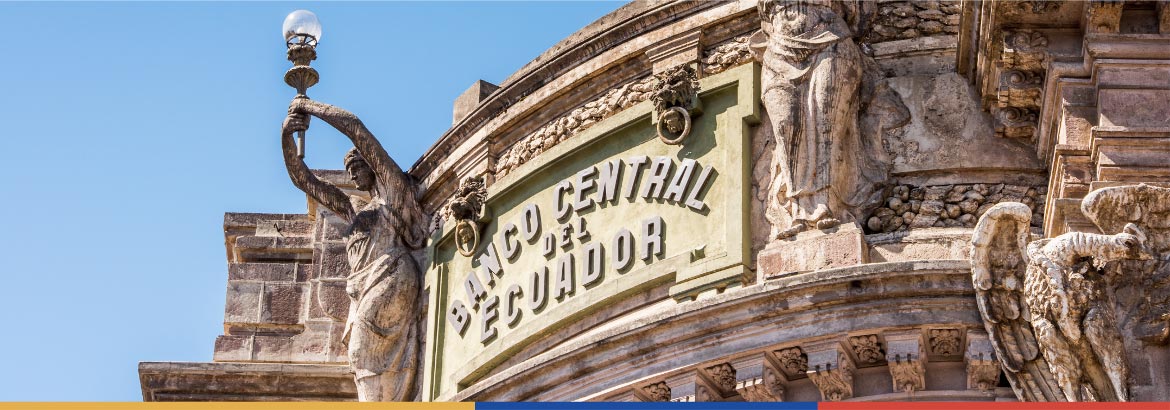In July 2022, the Reserve exceeded $9.0 billion, but the drop in the price of crude oil and other payments have been reducing it.
The International Monetary Reserve has recently experienced a significant decrease, currently standing at $6.905 billion as of September 1, 2023. This marks a substantial decline of $2.111 billion from its peak value of $9.016 billion recorded on July 22, 2023.
The announcement of this decline was made by Guillermo Avellán, the manager of the Central Bank, who, despite the decrease, reassured the public that the reserve still covers 100% of the national fractional currency and the deposits of both public and private financial entities.
What is or isn’t covered?
It is imperative to recognize that the international reserves’ resources belong to the people of Ecuador and are primarily deposited by public and private entities in the Central Bank of Ecuador (BCE). These reserves play a crucial role in safeguarding foreign transactions and ensuring the sustainability of dollarization in the country.
However, a closer look at the Central Bank’s balance sheet reveals a complex picture. Currently, the Central Bank’s liabilities amount to $14,110 million, which indicates that the $6,905 million in reserves covers only a portion of these liabilities. An alarming $7,205 million remains uncovered.
The Central Bank’s liabilities are divided into four distinct systems:
- The First System: This system comprises deposits from the financial system, BanEcuador, and fractional currency, totaling $4,603 million. Importantly, this system currently enjoys 100% coverage.
- The Second System: Deposits from other financial institutions, including the National Financial Corporation (CFN), Bank of the Ecuadorian Social Security Institute (Biess), Deposit Insurance Corporation (Cosede), and others, amount to $985 million, all of which are fully covered at 100%.
- The Third System: This system encompasses deposits from the non-financial public sector, including public companies, IESS, and transfers through the payment system. With total deposits of $6.245 billion, it currently only has 21% coverage.
- The Fourth System: This system represents the rest of the ECB’s liability, equity, and results accounts, with a total value of $2.275 million and no coverage at all.
Why is the fund not balanced?
Alberto Acosta Burneo, the editor of Analysis Weekly, sheds light on the factors contributing to the significant drop in the international reserves. First, the decline in the price of oil, a critical revenue source for the treasury, has led to reduced income. Additionally, debt amortization payments have been a necessity, resulting in a net outflow of foreign currency. Furthermore, financing is not readily available, and Ecuador finds itself in a situation where it pays more than it receives, making it challenging to secure new debt.
Acosta Burneo clarifies that while the Central Bank’s statement emphasizes that deposits and reserve requirements of banks and cooperatives are covered, it is not positive news that the overall reserve has decreased. He highlights the substantial gap created during Rafael Correa’s tenure, where the balance sheet of the Central Bank expanded significantly due to the issuance of “Ecuadollars” for approximately $9.0 billion in exchange for bonds. This imbalance of over $7.0 billion persists despite efforts by the current government to repay the ECB’s debt.
What the presidential candidates want to do
The most concerning aspect of this situation lies in the third system, which holds deposits from public banks and the IESS. When asked about the viability of Luisa González’s proposal, a Correismo candidate, to utilize $2.5 billion from the international reserve to finance her plans, Acosta Burneo points out that such an action would be illegal, as it violates the Law of Defense of Dollarization. Burneo says that if she finds a way to abscond with the funds, it will even further weaken the reserve, making it a risky proposition.
In contrast, candidate Daniel Noboa’s approach is to strengthen the reserves. His work plan emphasizes the importance of maintaining fiscal discipline and responsible management of public finances to protect and reinforce dollarization. He also proposes “increasing international reserves to provide a safety net in case of external economic shocks.”
To sum this all up, Ecuador faces a challenging economic situation with a significant drop in international reserves, largely attributed to falling oil prices, reduced treasury income, and debt obligations. While some liabilities are covered, the overall balance sheet of the Central Bank reveals vulnerabilities. Political candidates offer differing approaches to address this issue, emphasizing the need for fiscal discipline and measures to bolster the reserves to ensure the country’s economic stability.


0 Comments